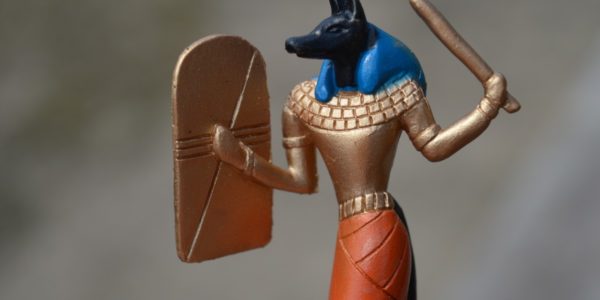Ancient Egyptian priests, we’re told, had statues of deities which they caused to move and speak. The statues chose the next ruler from the available heirs and prophesied. These robots in Ancient Egypt were more puppets than robots, even if they used hydraulics to move. But there is a place for robots in the story of Ancient Egypt.
Specifically, there is a robot that was specifically designed to navigate a tiny shaft in the Great Pyramid of Cheops.
The Great Pyramid
The Great Pyramid was built at the behest of Cheops, or Khufu, an early pharaoh who nearly bankrupted his kingdom and severely oppressed his people to create this enormous burial chamber, the last remaining one of the Wonders of the Ancient World.
In the pyramid there is a passage just about seven inches square which extends for 66 yards from the Queen’s Chamber to a small chamber higher in the pyramid.
Some scholars have suggested that shafts like these might have been air vents. However, the robot’s camera sent back pictures that suggest that the chamber where the shaft ends up has been painted. It’s hard to imagine any reason to paint an air shaft.
The robot
Rob Richardson, Professor of Robotics at Leeds, was the leader of the team that developed the robot. It needed to be able to climb steadily along the shaft without damaging the structure, and of course what the robot might discover at the end of the shaft was unknown It weighed just about 10 pounds, so it was able to go further without using up too much energy, and it did not cause any damage.
The robot encountered some issues. For one thing, there was a step. The step, which appeared suddenly along the shaft, was only about two inches high, but the robot was not designed to ascend steps. It had to be brought out of the shaft and reconfigured to manage the step.
Then the robot met a stone blocking progress beyond that point. Once again the robot was brought back to the Queen’s Chamber. This time it was fitted with a drill before being sent back. The researchers were able to guide it to drill a hole in the stone without damaging the stone itself or the surrounding structure.
The camera was inserted through the hole, and the researchers saw the chamber, with clearly human-made marks on its floor.
Experts have speculated that the marks are numbers written by the builders, tracking the size of the space, but there has so far been no certain interpretation.
The project also hasn’t clarified the purpose of the shaft it was studying. However, it confirms that robots have more potential and purposes than we can easily imagine.



